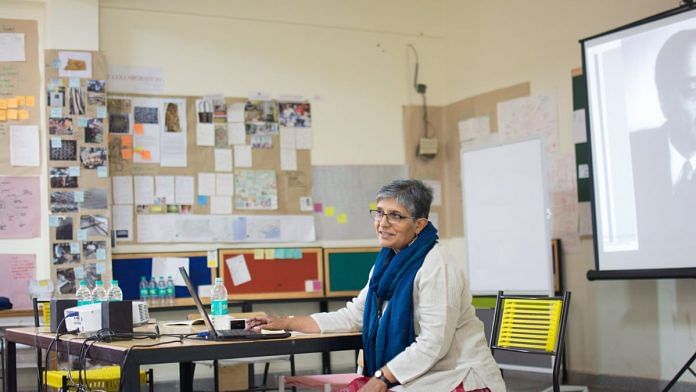Bengaluru: Indira Chowdhury desperately wanted to archive post-colonial and contemporary India and Indian lives. But when she approached academic institutes to ask for papers, she was met with rejection after rejection. They simply did not have the financial resources to support a large-scale, or any other scale, archival project. That was in the 1990s. Today, the historian-turned-English teacher is one of India’s top archivists in the field of science, having worked with institutions like Bengaluru’s National Centre for Biological Sciences and Mumbai’s Tata Institute of Fundamental Research to document the process of science and the scientific method.
Archivists are diggers of the past. They are historians, detectives, journalists, puzzle solvers and storytellers—all rolled into one. Institutional archival work as a process did not really exist in post-independent India, especially when compared with the colonial era, where the British heavily maintained documentation. However, Indian accounts and context were missing from pre-1947 archives, especially when it came to documenting scientific discoveries and institutions.
“The process of science, how it is done, is not captured and is not on published record. Some experts that I’ve worked with did not have anything beyond a school diploma, and their expertise developed with time and experience,” says NCBS archivist Venkat Srinivasan, who credits Chowdhury for almost single-handedly changing archiving in the realm of science and India’s academic institutions, most of which came up after Independence.
“Her work made a huge difference at NCBS, on science archiving, and my own life,” he adds.
Chowdhury has opened many a dusty old cupboard, cleared cobwebs from mounds of files and papers, and even watched out for the occasional snake.
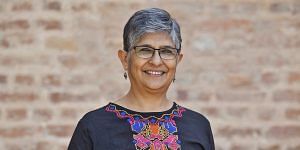
“Archival work explores the methodology of a process. A mathematician can very quickly start talking about a particular problem they’re working on, but how does a mathematician identify a good problem to work on? That is what I am interested in,” says Chowdhury.
Today, archivists are increasingly proving their worth not just in crusty academic institutions and libraries but also in popular culture. When Amazon Prime Video aired Jubilee (2023), set in 1940s Bollywood, the show was praised for its costumes, pictures, and contextual accuracy. The historical precision resulted from the work of archivists showmakers had hired to get facts straight. Netflix’s recently released docuseries, The Hunt For Veerappan, which recalls the dramatic rise and fall of a dreaded bandit-turned-terrorist, also used archivists for factual & historical correctness.
According to Chowdhury, recently retired founder-director of the Centre for Public History at Bengaluru’s Srishti School of Art, Design and Technology, this is only the tip of the iceberg.
“We are barely grazing the surface with what we can do, especially with digitisation,” she says.
Also read: ‘India don dey Moon now’: How world media reported Chandrayaan-3, from Pidgin to Queen’s English
From snakes to Homi Bhabha
Chowdhury gets shocked and ecstatic every time institutions point her to dusty cupboards containing things that no one has touched in decades. While setting up the archives at the Indian Institute of Management (IIM)-Calcutta, she was warned about snakes in the storage room where boxes of documents lay untouched after the move to the new campus. In those piles, she found early photos of the farmland on which the institute now stands.
Before that though, as she sifted through early documents at TIFR, Chowdhury hit the motherlode. She found handwritten letters between scientists from TIFR and the Indian Institute of Science (IISc), and never-seen-before exchanges, like a letter from Albert Einstein to Homi Bhabha, and letters from Bhabha to physicists Paul Dirac and Richard Feynman. The findings also included correspondences to Leo Szilard, the famed Hungarian physicist from the Manhattan Project, and other valuable communications addressed to top researchers and physicists of the 1940s.
For decades, TIFR’s historical records—documents, letters, files, photos and memorabilia—had been put away and forgotten in the attic in a room adjoining the director’s office. These records dated from the years Bhabha set up the Cosmic Ray Laboratory at IISc during World War II. They must have been moved to Mumbai, when TIFR found a permanent home in 1945.
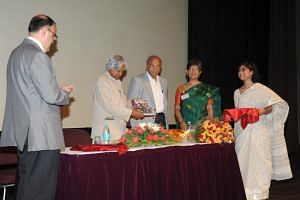
“Many institutes have tons of documents, books, communications, personal objects, memoirs, letters, and other paraphernalia that help capture the process of science,” says Chowdhury.
As per the Public Records Act of 1993, all 30-year-old government files are to be sent to the National Archives, she adds.”But there was no institutional archive exploring the work of TIFR from the beginning.”
These are the details captured through archiving – important for shedding light on scientific methodologies of the past and the present, and decoding lessons that can be learnt from them. Science is becoming increasingly institutionalised, which means documentation is now closely intertwined with the structure of scientific endeavours. As collaboration reaches international levels, preserving these details becomes ever-so-important, especially because this information can serve as a framework for scientific partnerships and projects.
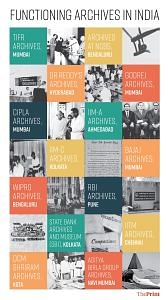
“There is a structure called getting a degree or a tenure track position. There are labs and equipment. All of this is a part of the process of science where things take place, and having spaces that contextualise how science is done are critical,” says Srinivasan, who is also a board member for archives at various Indian institutes.
And Chowdhury has earned a reputation for untangling the intangible and digging up information however well-hidden.
“Each dialogue with Indira was a master class in India’s scientific history,” says Vrunda Pathare, who has worked with Chowdury on the NCBS and TIFR projects. She is now the chief archivist at Godrej.
“Her adeptness at deciphering archival records and interweaving them with global political and social narratives showcases her profound scholarship,” Pathare adds.
Also read: Yellapragada Subbarow pioneered cancer research, but his US professor sabotaged his career
How Chowdhury got into archiving
Today, scaled down forms of informal archiving appears in the form of easily accessible Instagram accounts and YouTube videos, sporting content the younger generation loves to consume. But that was not the case when Chowdhury was bitten by the archival bug after she completed her PhD in history at the School of Oriental and African Studies (SOAS), University of London, in 1993.
When she returned to India and burrowed into the works of other historians and archivists, she realised that properly archived material existed in colonial India, but that contemporary Indian stories had become more about political science and sociality.
She got her break as an archivist at NCBS in the early 2000s. The centre had a historian in residence — very unusual for a scientific institution — who knew Chowdhury. When she visited the campus, she met the institute’s founder-director, the renowned scientist Obaid Siddiqi, who was interested in her work and ideas. To get her started, Siddiqi suggested she archive their molecular biology work, for which the institute is renowned to this day.
“It was a bit scary because I did science only until the 11th,” says Chowdhury, adding that she didn’t know much about biology and DNA or interviewing scientists either.
Science archiving isn’t mere record-keeping. It involves accuracy and proper contextualisation of information, and establishing proper connections between different objects and stories. The method of arrangement of archives, their size, and information aid scientific research in an institution while also offering insights into relevant contexts – political, social and otherwise – of the day.
Chowdhury knew she had to dig deep into hour-long interviews with scientists, read transcriptions of talks, teach herself history and science, and more. So Siddiqi requested she stay a year and try.
She took a year-long sabbatical from Jadavpur University, where she was teaching English, to work at NCBS. Here, she immersed herself in the life and work of Siddiqi and other scientists, finding patterns and documenting personal incidents.
Her work involved creating a working process for labs and their employees. She started researching the workers’ personal and professional lives, communications, and the scientific networks and sociopolitical issues that influenced their research.
“I began to notice that people keep memorabilia, they keep reports, letters, photos, and a whole bunch of such personal things. So we turned it into an exhibition at NCBS in 2002,” she says, describing the beginning of her work archiving scientists’ lives and way of life.
She set up archival records across multiple content genres. Today, some institutional archives are publicly available and accessible online. She continued at NCBS for another year after quitting her job at Jadavpur.
“Work that gets put out in science is in the form of what we call research papers, and they are also evaluated on the basis of this research,” says Venkat, adding that “the process of science, how it is done, is not captured and is not on published record.”
Chowdhury’s experience putting together the archive reinforced her self-confidence, showing her she was on the right path. And other institutions started taking notice.
The director of TIFR-Mumbai, the parent body of NCBS, invited her to set up their archives.
Also read: Gulab jamun to ISRO SSLV—space evangelist Srimathy Kesan building satellites with teen girls
Oral history
Chowdhury is a pioneer of oral history — in-depth audio interviews and archival material with each interview extending to 10 to 20 hours in duration. And the Oral History Collection at TIFR stands as a testament to this. It contains Chowdhury’s extensive interviews with scientists, going into comprehensive details about their work in the context of their time in the institute.
“It’s a remarkable curation, an unparalleled trove within the TIFR archives,” says Pathare, who has successfully conducted her own oral history projects at Godrej. The institute’s publicly accessible oral history archives and interview sessions with 41 scientists and other experts are part of an ongoing project.
Chowdhury’s first oral history ‘interview’ before TIFR had been at NCBS with Siddiqi, after which she had spoken to 11 scientists there. Some interviews are about 15 hours long, and each of them goes in-depth into a person’s life and work.
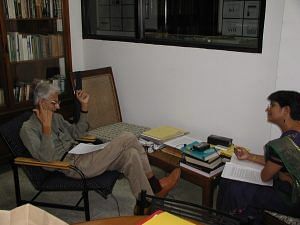
These deep dives into a person, their work, life, personal experiences, research, methodology and area of specialisation are nothing like podcasts.
Oral history is different from a typical podcast or interview because of the future context it offers; the perspective is completely different, and lends a human edge to the science archival process.
These histories don’t qualify as biographies either, says Susmita Mohanty, oral historian, space entrepreneur, and co-founder of space policy think tank Spaceport SARABHAI.
“Oral historians dig much deeper than biographers, and consuming both kinds of content provide different kinds of outcome,” she says. Mohanty and her team have also recorded a series of Memory Monologues, where they talk to influential figures in India’s space research programme and the Indian Space Research Organisation (ISRO) as part of an oral history project.
The breadth of material captured in such projects far exceeds the information in other forms of record-keeping. Before it became common practice among the handful of science archivists in India, Srinivasan recalls becoming enthralled with it during a workshop at the University of California-Berkeley and learning that Chowdhury was perhaps the only expert in India.
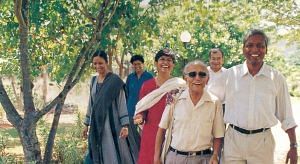
Prof P. K. Maitra visits NCBS in 2004. Maitra visited for the oral history project which Indira Chowdhury did during her stint there from 2002-2004 | Photo: by special arrangement
“It’s hard for me to overstate how significant she has been in the shaping of oral history and archival in India,” says Srinivasan.
He adds that her ability to connect to diverse individuals across disciplines is unparalleled globally.
Oral history projects require tact. Asking relevant questions that get people to talk contextually about the past and the future, the process of the present, and pulling out candid details from this information, requires a special kind of skill.
“Indira has a way with words — she chooses them carefully, speaks them softly, and is able to tactfully resolve confusions and conflict,” says Sanghamitra Chatterjee, who worked at Godrej Archives under Pathare and now runs her archival company Past Perfect, which worked on the research for both Jubilee and The Hunt for Veerappan.
“There is this calmness in the way she addresses and tackles issues, and she has a way of handling situations without escalating them, and even senior management start taking her words very seriously very quickly,” adds Chatterjee.
Also read: India’s astrophotographers club growing. But where do they go for clear skies?
Archival process in science
Setting up an archive from scratch, sorting relevant information from the detritus of papers, trash and scraps of documents and then building a narrative is hard work.
As Chowdhury explains, no institute had an automatic or default archival system in place to preserve documents because it took up space, time, and resources.
Many professionals and academics who train abroad and come to India to set up their own labs do not have the time or resources for archiving. But Chowdhury also points out that many scientists think they do not need to archive because they have “achieved nothing”.
“Discovery is just one part of science. It is the process of science and [the] human stories behind them that are necessary to be archived. Historical context is important,” she adds.
The working process typically follows “decisions, actions, and memories” —a phrase in the opening line of ‘The Declaration of Archives’ from the International Council of Archives.
“This phrase is extraordinarily powerful in what it says and what it doesn’t say,” says Srinivasan, adding that archival isn’t just someone doing something. “There is a deliberate attempt at recording an event in some form.”
He gives the example of large projects like the Laser Interferometer Gravitational-Wave Observatory (LIGO) that have thousands of people from various backgrounds working together. “Having spaces that contextualise science is critical. Archives help contextualise the thing being archived.”
Archives also differ from Wikipedia in that each archival object — be it a paper or a photograph or an item of clothing or a piece of jewellery — has multiple bridges and connects to different stories, offering various perspectives to seeing the object instead of converging on a single truth, adds Srinivasan.
Archivists have no shortage of moving personal moments to cherish fondly.
While working on the tree transplantation project, Chowdhury met horticulturist SD Vaidya of Bhabha Atomic Research Centre (BARC), who performed the tree transplant from Mahalaxmi to the TIFR Housing Complex. When the process was over, Chowdhury put up a list of all gardeners and other staff involved in the project.
“I noticed one member of the gardening staff coming again and again to read that list. One day, he asked me if I could give him a copy of it. When I asked why, he said his father’s name was on it,” recalls Chowdhury.
At NCBS, she also remembers finding Szilard’s recommendation letter for Siddiqi and a letter that Homi Bhabha had written to Nehru about him, both of which Siddiqi had never seen before. The confidential letters had been kept sealed for decades and are now available in the archives.
Embargo is another aspect regularly encountered in archival work, especially in oral history, where many people choose to have their interview released to the public a few years after their death.
Also read: Who is Joyeeta Gupta? LSR alum who has won top Dutch science prize for work on climate justice
The future
In India, a handful of senior archivists are training a new generation and building nascent archival processes.
“I do not agree when people say we do not have archival traditions. We have oral histories carried down for generations and have a strong sense of the past,” says Chowdhury.
She adds that this was also the case in most places in Africa and among the aboriginal peoples in Australia.
In academic institutions, people like Chowdhury often make their work public and interactive through quizzes and exhibitions for students.
There has also been a growth of private companies like Chatterjee’s that do consulting and contracted archival work. One form of such work is exhibitions with curators and designers, while another is institutional histories, public or private.
For many legacy businesses in India, elements of family history often make up the bulk of archiving work in such places, explains Chatterjee. Yet another archiving vertical is consultancy work in the entertainment industry. “Today, there are many formats in which to archive. Oral history is a fast-growing one, but it can also be done through video,” she says.
But there’s a new challenge knocking on their doors. “Many of us are concerned about deep fakes now and where AI will take us. I really don’t know where the future is headed, but I hope there is more support for science archiving in India, and institutions make it a part of their structure instead of just celebrations,” says Chowdhury.
(Edited by Zoya Bhatti)


